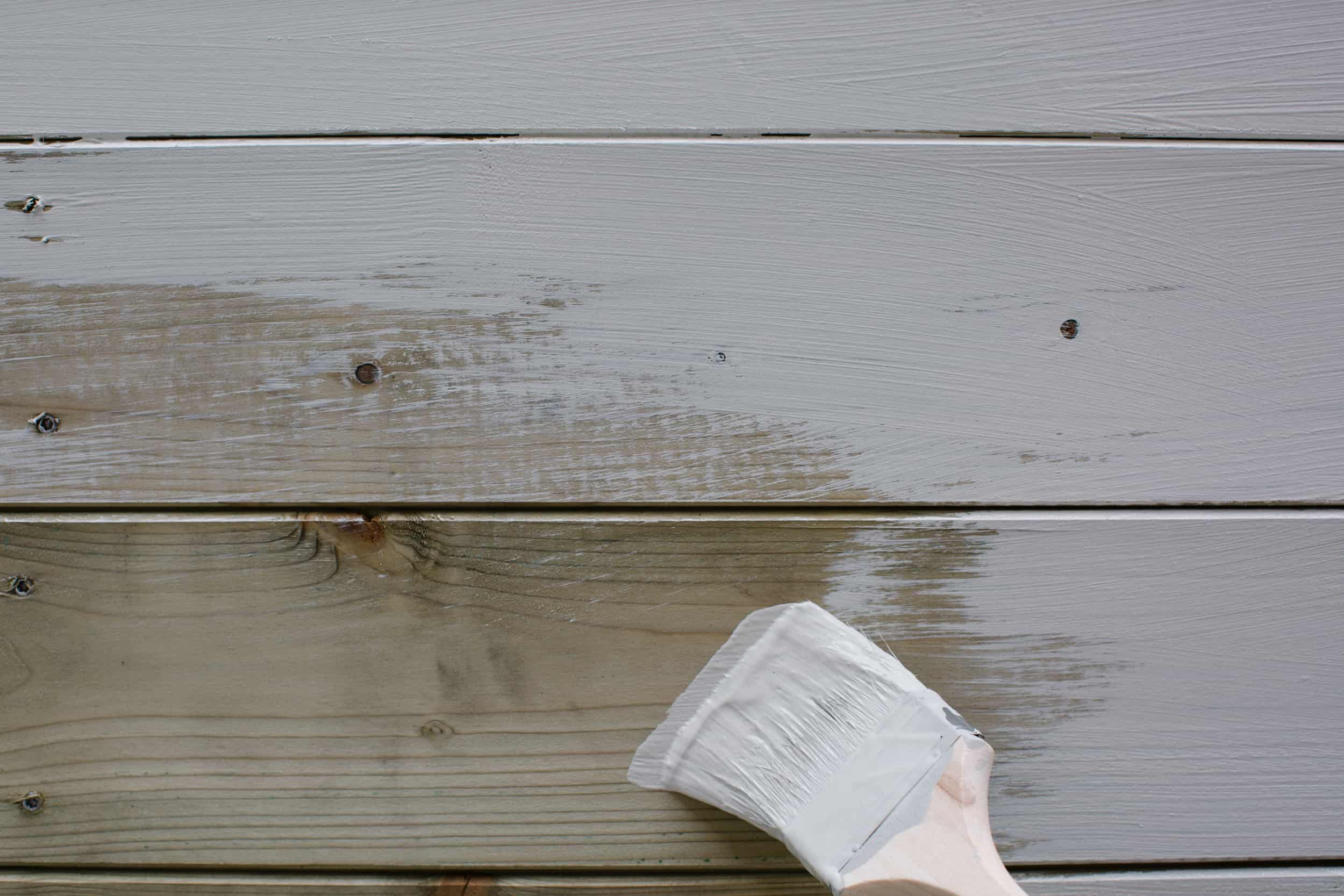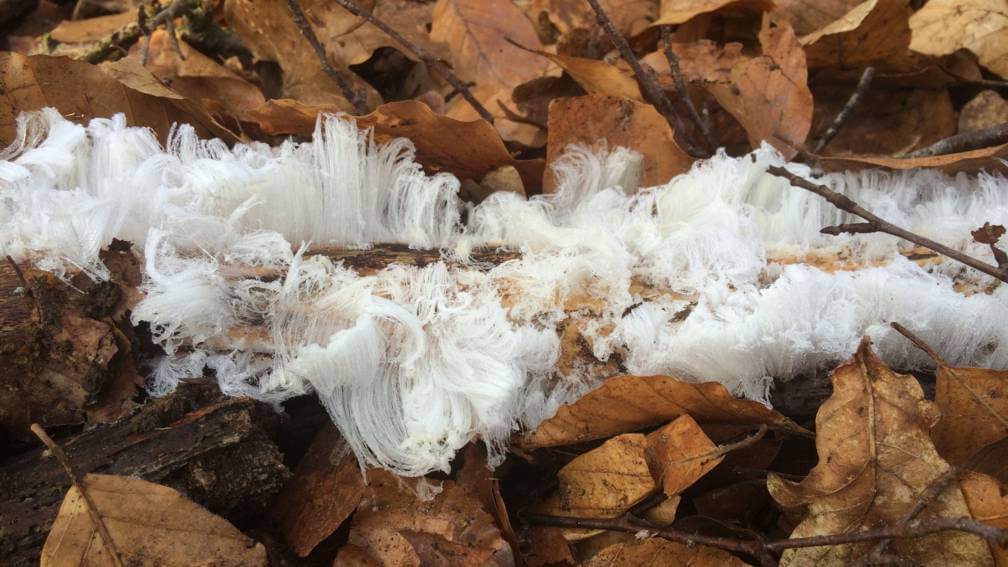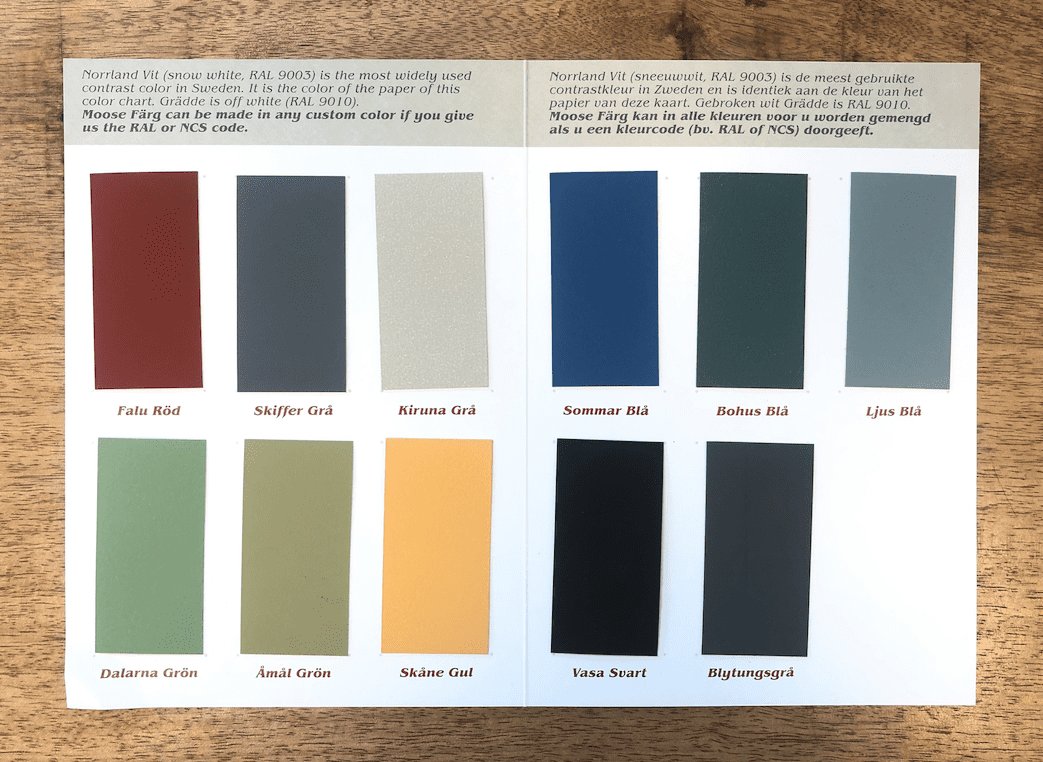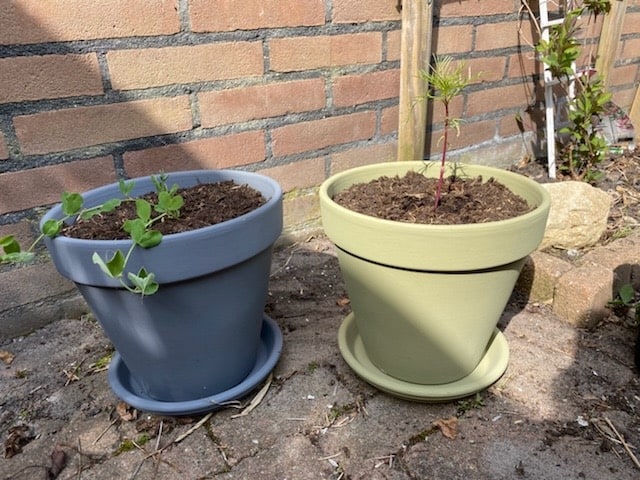Payment, shipment and returns
You can pay for your order using one of the following options:
• Direct bank transfer
• Creditcard
• PayPal
• SOFORT Banking
• Przelewy24
• iDeal
• Bancontact/Mister Cash
You can select your country during checkout.
Does your country not appear in the options? Please send us an e-mail and we will let you know what is possible for your specific country.
Shipping costs depend on the country of destination. During checkout, the shipping costs for your specific county will appear.
Does your country not appear in the options? Please send us an e-mail and we will let you know what is possible for your specific country.
On business days, we will ship your order the day after your order is placed. After we receive the payment, your order will generally be delivered in 3 – 5 working days. Of course, this is depending on the shipping destination, so shipping time may also take longer.
After we ship your order, you receive en e-mail with the tracking code of your order so you can follow the shipment.
Returns are possible within 14 days of receiving your order. Please send us an e-mail with your order number to inform us that you are going to return (part of) your shipment.
You pay the costs of the return shipment yourself. If we have received your return in good condition (unopened and undamaged), the amount of the original order including shipping costs will be refunded within 14 days.
When returning part of your order or if you return outside this period (contact us), you bear the original shipping costs yourself. Customer-specific products cannot be returned.
Our Terms and Conditions apply to returns and cancellations.
You can return (part of) your order to:
Moose Farg
Witte Paal 304a
1742 LD Schagen
The Netherlands
We’re sorry to hear this! Please contact us and we will look for a suitable solution with you.
The paint is – when still wet – easy to remove from your hands, clothing and floor with soap and water. When it has dried, this is no longer possible so do not wait too long to clean up leaked paint.
In order to help you with the damage, we’d like to receive pictures of the damaged shipment. Please include these when you contact us about your damaged shipment. It is important that the outside of the box with the shipping label is visible. We would also like to receive a photo of the damaged pot inside the box with the original packaging material. In this way we can further handle the damage with DPD.
Application
To achieve an opaque result, you will need to apply two layers of Moose Färg paint.
• With 4 liters of Moose F you can paint around 20 to 24 m2 opaque result.
• For Moose RDM this is 18 m2 opaque result per 2 litres.
Opaque result means that we already take into account 2 layers of paint.
Note: Light colors (especially white) cover a little less, so a third coat may be necessary. Paint consumption can also be 30% higher on highly absorbent surfaces. Very old and dry wood is an example of a highly absorbent surface. Brick and fresh concrete can also absorb a lot of paint, please keep this in mind.
Of course! Paint from Moose Färg is water-based and has the robust quality of an exterior paint.
It is often thought that outdoor use requires a turpentine paint. However, the quality of our paint is very strong so it can withstand different weather conditions. The great advantage of our water-based paint is that the wood can continue to breathe. Moisture can move in and out of the wood, preventing the paint from wood rot and peeling.
A water-based paint for outside is actually a very good idea, as turpentine-based paint is a less good option for your health and the environment.
Yes, this is possible if the pre-processing is done thoroughly.
You can paint pre-painted wood with both Moose F and Moose RDM, but you must prep your wood very well. It is very important that the bottom layer can no longer peel.
If there is a layer of lacquer on it, you should sand it coarsely with grit 80. A coarsely sanded surface ensures good adhesion and a beautiful result. Also read our painting advice.
Note: this is not possible with Moose S. This type can only be used on very rough and untreated outdoor wood.
It is best to paint at a temperature above 15 °C.
If you paint at a lower temperature, the paint dries very slowly. The chance that it will rain before the paint has dried becomes very high. Humidity also plays an important role in the drying process of the paint. Paint dries less well when there is a lot of moisture in the air.
If you’re going to paint outside, make sure to pick at least 3 to 4 consecutive days with a temperature above 15 °C, no rain and low humidity.
Higher temperatures or painting in the full sun? That’s no problem. Just make sure that you dilute the paint very well (sometimes with as much as 20% water) because the paint dries very quickly in the full sun. If you do not dilute well, it increases the chance of visible brush marks.
The drying time of wood paint depends on temperature, air moisture content and the surface. Moose Färg is waterborne, so the water needs to evaporate in order to create a strong, well dried paint.
At 20 °C, Moose Färg can be repainted after around 4 – 8 hours. When the surface absorbs the water this can be quicker. Moose Färg is completely dry and water resistant after 1 week. At lower temperatures and higher humidity the drying times can be longer. Do not paint below around 13 °C. Drying time then becomes too long.
Yes, you can almost always paint over with another paint.
Moose Färg is a particularly good primer. But, rather paint with Moose Färg, of course 🙂.
All Moose Färg colors can easily be painted over with one of our other colours. You then do not have to sand first, you can just paint over!
You can use Moose Färg paint for all types of wood.
For all types of wood:
• Pine and spruce wood
• Douglas wood
• Larch wood
• Red Cedar wood
• Accoya and thermally treated wood
• Wolmanized wood
• Wood that has been impregnated
• OSB boards and MDF boards, provided that they are properly degreased and roughly sanded
• Hardwoods such as oak, meranti, bankirai, azobe, padouk, teak. These types of wood are often used for indoor furniture, doors and frames, for which you can usually use our high solid paint Moose RDM.
Please note that each type of wood has its own natural character. Freshly impregnated wood, Larch and Douglas, for example contain a lot of resin and/or impregnation residues. It is wise to let these types of wood “sweat out” for a few months for the best long-term result. Be sure to read the painting tips.
Choose the right type of paint for your painting job and type of wood:
Moose F, Dimma and Skydd:
Moose F, Dimma and Skydd are ideal paint types for softer, open woods such as pine, spruce, scaffolding wood and Douglas. Fences, garden furniture and garden houses are often made from these types of wood and are therefore ideal for painting with Moose F, Dimma or Skydd. These types of paint absorb very nicely into the wood and have the characteristic of being able to move along with the shrinking, expansion and cracking of the wood.
Moose RDM:
Hardwoods such as oak, meranti, bankirai, azobe, padouk and teak are often used for indoor furniture, doors and window frames. You can usually use our high solid paint Moose RDM for this. This type adheres better to smooth and hard woods that do not “work” (shrinking, expanding, cracking).
In addition to wood, Moose F is also suitable for use on other surfaces, such as:
Other surfaces:
• Concrete
• Terracotta, such as flower pots
• Brick, such as exterior walls
• Stucco, also coarser versions such as spachtelputz
• Wallpaper
• Loam
For indoor and outdoor
You can use all of our paint types both indoors and outdoors. The paint has the robustness of an exterior paint, but contains minimal to no harmful substances. You can also use our paint in a bedroom and already sleep in the room the same night! Which paint we recommend and how to prepare best depends on the application.
Moose Färg paint is not suitable for:
• Substrates with a smooth surface without open pores. If you still want to paint this with our paint, a primer is necessary
• Plastic
• Metal. Painting small metal nails is no problem, but large metal surfaces are not a good idea.
• Silicone or adhesive sealant
Are you unsure about an application or do you need advice? Please contact us, we are happy to think along with you.
Paint composition
This is a difficult question, as it hinges on your opinion on ecological. The term ‘ecological paint’ or ‘nature paint’ is not a registered or protected name. The term sustainability is also used and misused in many different ways. Companies therefore decide for themselves whether their product is ‘sustainable’ or ‘environmentally friendly’ and sometimes give their own interpretation to the term natural paint.
Moose Färg contains no harmful substances and a minimal amount of solvents. The paint is based on processed, natural raw materials such as linseed oil and other natural vegetable oils. This makes our paint easily biodegradable. In the modern version, processed linseed oil (alkyd) is used and the old ‘cooking paint’ recipe is followed as much as possible. The pigments are also mostly earth pigments (red, yellow, black, white).
Besides, pure is not always a guarantee that a product is not harmful. There are also plenty of toxic natural pigments. For example, Swedish red paint once contained lead – Moose Färg paint, of course, does not.
If you would like to buy a paint as natural as possible, you can pay attention to the following points:
• The hazard statements on the pot.
These markings are mandatory in the EU on products that can explode or ignite and that can be dangerous to your health or the environment. Moose Färg’s paint does not require any hazard statement.
• The volatile organic compounds (V.O.C.) in a product.
These are substances that are released as vapor at room temperature. The EU has set a limit value for this (2010/cat. A/d) of a maximum of 130 grams per litre.
Moose S contains 0 grams per liter, Moose F, Storuman Skydd and Moose RDM contain less than 3 grams per liter.
Please note: some brands or products may pretend to be sustainable by claiming to contain “low levels of V.O.C.” For example, we recently saw a product that pretended to be ‘the most durable, opaque stain’. It still contained 80 grams per litre, quite a lot!
• Preferably choose a water-based product.
There are two ways to dilute paint: with turpentine or with water. A turpentine-based paint contains more harmful substances and is therefore more harmful to the environment and to yourself when you process the paint. Moose Färg products are standard waterborne. This applies to the paint, but also to the floor lacquer Topp and the nano-coating Pansar. Incidentally, there are water-based products that still contain a lot of V.O.C. A water-based paint is therefore not by definition a natural paint.
• The recommended pre-treatment.
Some products require a base coat with many harmful substances. The finish layer may be environmentally friendly, but the primer is still very chemical.
This does not apply to Moose Färg products. Moose F, Moose S and Storuman Skydd can be applied directly to the wood. Moose RDM requires a primer, but this can be done with Moose F or by heavily diluting Moose RDM with water.
• Long-term quality.
A product can be produced in a sustainable manner, but if you have to repaint very often, it is hard to call the product a sustainable paint. Moose Färg paint is water-based and usually remains good for at least 5 years. If you want to touch up, you don’t have to sand again. You can just clean the wood and put on a new layer of paint. The old layers can simply remain in place!
• Be careful for greenwashing.
There are beautiful, sustainable initiatives, but they are also often used as a way to unjustifiably give a company a sustainable touch. We believe that sustainability and environmental friendliness should be part of a company’s DNA. You do not have to compensate for the CO2 that you do not emit. Companies that sell way more toxic products, but plant a tree for each purchase or CO2 offset still feel a bit bitter.
Indeed. Moose F, Storuman Skydd, and Dimma are all “breathable” paints.
How does this work? Due to the low solids content and “drying oil”, water vapor can still breathe through the paint. Moose Färg protects against water penetration: waterdrops roll off. At the same time, water vapor can pass through the paint well, as if Moose Färg paint seems to be “breathing”. Because Moose Färg is a moisture-regulating wood paint, you do not need to treat the back side of the wood (except for spruce wood, as this type of wood is very unsustainable when left untreated).
Wood is a living material. Although it is no longer connected to the living tree, the cells still swell and shrink with higher or lower moisture content.
It is very important to protect wood with a moisture-regulating paint. Excess moisture can seep through the paint and the wood can also absorb moisture again. Moose Färg does not cover the wood with a sealing film layer, and has an open structure.
In the photo you can see how much moisture can come out of the wood on a cold, frosty day when it cools down. Here, it is frozen, making it very visible. Your wood will also continue to shrink and expand. This also causes cracks in the wood, which is a normal process. Because of this process, it is important that the paint does not form a sealing film layer under which the water can creep. This causes blistering in the end.
Yes, all Moose Färg paint types are waterborne.
Paint consists of a carrier, a filler, a drying oil and pigment. In Moose Färg paint, the carrier is water. Logically, the paint can therefore be diluted with water. The water disappears during drying through evaporation and because it penetrates into the wood. If the paint cannot penetrate into the surface, the paint will dry more slowly. At lower temperatures and higher humidity, the paint also dries more slowly.
A turpentine-based paint is less good for your health and the environment. Another big advantage is that wood with water-based paint Moose F can keep “breathing”. Moisture can still move in and out of the wood. A water-based paint like Moose F is therefore a very good option to use outside. Better for yourself, the wood and the environment.
Yes. All of Moose Färg paint types are completely matt and have no gloss.
No, all of our paints are completely lead free. Moose Färg Swedish red does not contain lead.
Moose Färg contains a minimum of volatile organic compounds (V.O.C.): < 3 g/l. This finds its source in the pigments used. Moose Färg is thus a nearly solvent free paint.
Other
Read below about the benefits of Moose Färg matt paint:
Easy to use
No brush strokes, dries evenly
Smells pleasant
Rinsing of brushes and clothing is easy with soap and lukewarm water
No organic solvents
Dilutable with water
No undercoat or primer required
Do not sand between coats
Easy to maintain
Clean with soap and lukewarm water
When re-coating: Wash and brush of dirt,
sanding off the old layers of Moose Färg is not necessary
Immediately paintable
Durable
Swedish quality with centuries of experience
No peeling or flaking (follow the instructions)
Maximum vapor permeable
Lets the wood be the wood, not shut it off
Usually maintenance free for at least 4 – 5 years
Technically to 10 years accounted
Environment and human friendly
Completely environmentally friendly composition
Also in production and waste phase completely environmentally friendly
Unique colors
Matt light diffusion
Beautiful matt colors
The wood structure is retained
Yes, our Swedish red is the original Falu Röd color as it has been used for centuries. The Falu Röd colour is identical to falurödfärg and finds its origin in the city of Falun in Dalarna, Sweden.
Essentially, the Falu Röd pigment is iron oxide and derives its name from its origin. Falu Röd colour is depending on the processing of the oxide. At the start, the color is yellow, as the compound ironhydroxide is yellow. After oxidisation it becomes orange and then red as more of the substance is turned into iron 2 oxide.
Further oxidisation turns the material into iron 3 oxide which is black. This is also widely used in Sweden.
In England, this type of earth pigment is also used, mainly for the landed gentry. Where each squire had its own shade of red used for the manor and the cottages.
Rio Tinto is one of the biggest mining companies, named after the red colour of the river near its base mines.
Read more about Swedish Red.
Yes, the color chart shows the colors exactly. It is painted with the paint itself.
This way, you can judge the colors properly. The colors are slightly different on every surface and with every light. It is therefore advisable to hold the color chart in different daylight. Bohus Blå is (very slightly) darker on paper, the other colors are exact.
Would you like to receive our free Moose Färg color chart? You can request it here.
Storing leftover paint:
Moose Färg paint has a long shelf life if you store it properly. You keep your paint well by protecting it from direct sunlight and frost. A dry, dark place with a temperature between 5 and 15 degrees is advisable. If you store the paint in a shed, make sure that the paint cannot freeze during winter. Close the jar airtight when you store it, so that the paint does not dry out.
Close the jar immediately after opening, so that no bacteria can get into the paint, also during painting. Use a paint tray while painting, so that you can close the jar immediately after and no bacteria enter the jar via your brush.
Reusing leftover paint:
Don’t throw away leftover paint. Leftover paint can be used very well for small painting jobs. Our paint is environmentally and animal friendly and is therefore very suitable for painting a bird house or insect hotel. You can also give a wooden or terracotta flower pot a complete new look with leftovers. Painting a wooden lantern is also easy to do. Moose Färg can also be used indoors, think of furniture, photo frames or a bookshelf. In short: plenty of options!
Do you have nice examples of using leftover paint? Send them to us by email!
Disposing of leftover paint:
An empty jar can simply be placed in the residual waste. Paint residues are not a problem when they are completely dried out. If you have ‘wet’ paint left over, take it to the recycling station. Even with a paint based on natural materials, such as Moose Färg, it is better to prevent it from ending up in the sewer.
Would you like additional, personal advice?
We are happy to help. Send an e-mail or call +31(0) 6 55 333 165. Watch our Instruction Video for more information. Apply here for a free color-card.






